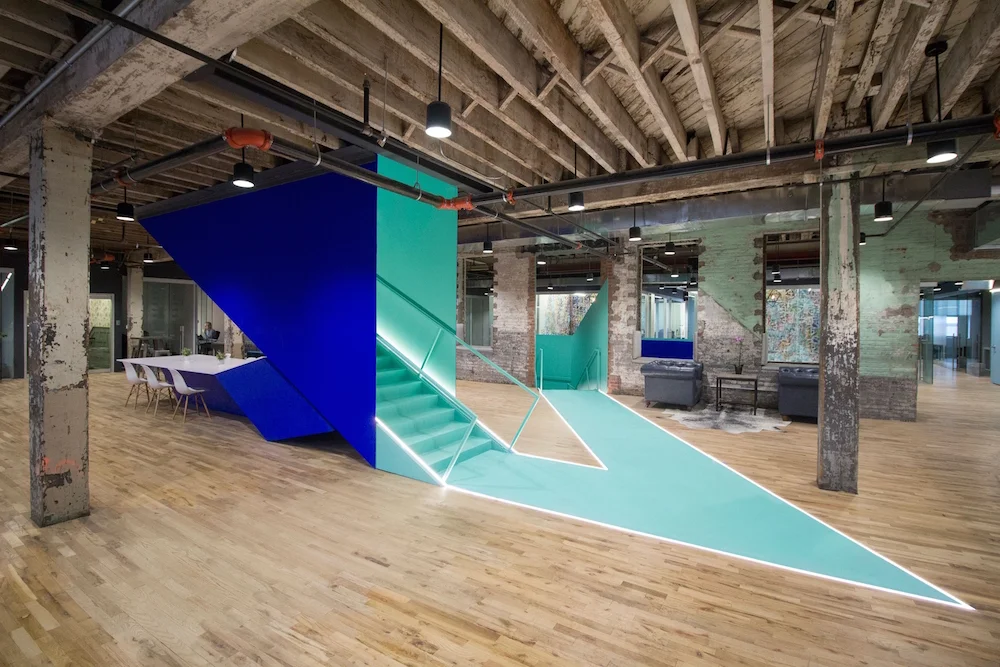WeWork Targets Asia as Valuation Hits $16 Billion
Shared-office-space startup WeWork Cos. has raised about $430 million in a new round of financing led by Chinese investors, making it one of the world’s most valuable startups and clearing the way for a push into Asia. Beijing-based private equity company Hony Capital Ltd. and Legend Holdings, its parent company, led the round of financing, WeWork company executives said, giving the company a valuation of about $16 billion, up from $10 billion last summer.
Virtual Office: an Actual Definition, and Putting a Stop to Shills
The flexible workplace industry, and its component offerings — like the virtual office — are often perceived by those in and around the industry to be misunderstood, overlooked or worse yet, completely unknown to those who might benefit from the industry’s services. In the past ten years, a new movement — coworking — within the flexible workspace industry has arisen and surpassed serviced offices and virtual offices in terms of popularity and buzz, and perhaps in other ways too.
TrendSpotting: Co-working in the Corporate Environment – Part II
Co-working is a positive trend in real estate that is taking over our offices and the headlines in industry news. Co-working models are becoming specialized by industry and are beginning to morph and blend in different ways, leading to even more iterations and opportunities for change. Organizations within the same industry, or who share similar business lines or services are exploring corporate co-working models, and discovering opportunities for mutual growth and success.
NO LONGER JUST STARTUPS: FORTUNE 500 COMPANIES ARE TAKING CO-WORKING LEASES
Co-working spaces are thriving (WeWork's valuation just hit $15B) off freelancers and startups—and now big businesses are getting involved. Recent WeWork tenants include General Electric, KPMG, Merck and British publication the Guardian. And these companies aren't exactly startups—their average age is 155 years, Bloomberg reports.
Catching China’s ‘makerspace’ wave
Whether an invention emerges from a basement laboratory or a family garage, there is no doubt that many successful innovators started tinkering with novel ideas at home. Unfortunately, not all would-be inventors have a spare basement or garage. The global co-working trend that sees creatives work in clusters of likeminded individuals has piqued the curiosity of the Chinese government.
Prepare to meet your MAKERS: the Seattle co-working space that feels like home
It’s no secret that the 21st century is challenging the very notion of work, as people all over the world are re-writing the rules of where, when, how and even why we do what we do for a living.
This Kickstarter Campaign Hopes to Fund a Coworking Space Specifically for Architects
As part of the current "sharing economy" revolution, coworking facilities have transformed the creative marketplace. Since 2005, when the first coworking space was founded in San Francisco, the popularity of working in a shared environment has taken off. Today, hundreds of coworking facilities exist in cities of varying sizes across the world, supporting small businesses ranging from app developers to furniture makers to recording studios. But how have they grown so quickly? It’s all in the community. WeWork, which owns a number of coworking spaces worldwide, sums it up as “a place you join as an individual, ‘me,’ but where you become part of a greater ‘we.'”
Phoenix co-working space launches Indiegogo campaign to help with expansion plans
Co+Hoots is seeking public help with expansion plans for its new midtown Phoenix co-working and education space. The 6-year-old Phoenix co-working small business has launched a $50,000 Indiegogo crowdfunding campaign to help furnish the new building and help pay for their loan.
Flexible working is about to reach a tipping point in the UK
The idea of flexible working has been with us ever since the advent of the Internet in the early 1990s, but it has taken until now for it to become truly mainstream. A report published today by the Work Foundation claims that the UK is on the verge of a flexible working ‘tipping point’ when over half of organisations in the UK are likely to have adopted flexible working. It also predicts that over 70 per cent of organisations will have followed suit by 2020. The report – ‘Working anywhere: A winning formula for good work?’ – is based on research with 500 managerial level employees within medium to large businesses. While growing numbers of organisations are predicted to adopt flexible working practices in the near future, the report indicates that there are still a number of issues to be addressed if employees and businesses are to fully reap the rewards of working away from the office.
3 Ways Nomads Are Staying Connected and Productive Wherever They Go
When possible, it is always nice to be able to work from home, but what if you could do so every day, and be certain that you could maintain a high level of work and productivity? A new group of transient professionals are spending less and less time at the office, and instead are bringing the office with them wherever they go. This is part of a larger theme from the Nomad Class Debrief, a new report from PSFK Labs, which examines the needs, behaviors and emerging trends of these untethered creatives.
The Rise of Coworking Spaces
Freelancers often have a hard time finding an appropriate place to work from. After all, hotel rooms can be isolating and hostel rooms can be noisy. Apartment walls can be so paper-thin that you have to bear with your neighbors shouting at each other all the time. In such cases, coworking spaces are the ultimate solution.
Co-Working Spaces Are Going Corporate
WeWork, the shared-office company valued at $15 billion, has cultivated a chic vibe to attract the freelancers and startup workers that helped launch the co-working movement. That means hip interior design (some offices have wallpaper created by the Beastie Boys' Mike D.) and free micro-roasted coffee and craft beer (the company gave out 90,000 glasses during a single month last year).
Can real estate keep up with the co-working craze?
Coffee shops, other people’s houses – co-working can happen anywhere. But opportunities for real estate will only grow if it keeps up with occupiers’ needs. You only have to step into a coffee shop to see that working outside the office is hugely popular. While sipping their lattes, customers are busy on their laptops, tablets and phones, or holding meetings. But as more providers enter the coworking market, the entrepreneurs and freelancers currently occupying the armchairs may become fewer.
Hire the Best People, and Let Them Work from Wherever They Are
Most organizations say they are more open-minded than ever about virtual teams, and yet they still have old-school systems in place for hiring people across the country or around the world. From where I sit, the overlapping barriers come down to structure, culture, and mindset.
WHY COWORKING MAKES PEOPLE HAPPIER AND HEALTHIER
In my previous life, I spent a lot of time in corporate offices that were just not good. Good, I suppose, in the sense that showing up resulted in a paycheck every two weeks; but not good for mental or physical health. Endless cubicles, no sunlight, low engagement, little sense of purpose, and chicken fried steak in the cafeteria. Seriously! Chicken fried steak. Convinced that our best selves shouldn’t be left waiting for us out in the parking lot while we punched the clock every day, I became passionate about creating a workspace where you are better off when you leave than when you came in.
A COWORKING SPACE FOR ARCHITECTS
For as much as we talk about coworking, there’s one big segment of our readership who probably thinks, That’s nice, but not for me: the entire AEC industry. The founders of Covo, a coworking space in San Francisco scheduled to open in June, have set out to change that. They’ve teamed up with Good Design, a collective of SF-based designers, engineers, and architects with a yen for coworking, to outfit their space with essentials like plotters, a materials library, and continuing education programming. We reached out to Daniel Brian, co-founder and COO of Covo, to find out more.
The Temptation of Co-Working Spaces
Technology has upended where we work. The line between work and play has been blurred, and the difference between the office and home has all but disappeared.
As a result, there’s a new class of white-collar workers (or no collar, to be precise) who roam the earth looking for places to get their jobs done.
Some of them work from home, curled up on the couch or in a home office — maybe with a drone hovering nearby. Others camp out at expensive cafes, refilling their mugs of fancy coffee throughout the day. (Yes, I’m referring to myself.)
Coworking is shaping office design in more ways than you might think
In his book How Buildings Learn, the author Stewart Brand outlines the process whereby buildings evolve over time to meet the changing needs of their occupants. He describes each building as consisting of six layers, each of which functions on a different timescale. These range from the site itself which has a life cycle measured in centuries, through to the building (decades), interior fit out (years), technology (months), to stuff (days). The effectiveness of a design will depend on how well it resolves the tensions that exist between these layers of the building. The principles behind this complex situation have been known to us for a long time, at least since the 1970s when Frank Duffy first introduced the world to his ideas about the physical and temporal layers of the building – in his terminology the ‘shell, services, scenery and sets’ which anticipates Stewart Brand’s own take on the interplay of building layers.
CBRE: Co-Working Spaces Not Just For Startups Anymore
The demand for co-working space is expected to continue to rise in 2016 as more companies, including Fortune 500 corporations, are moving in to these types of facilities. That’s the word from CBRE, which recently released a research report on the topic.

























